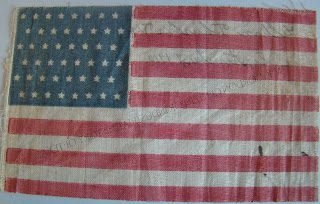Grafting Greatness
By Scarlet Webber
Led by Thomas Winfield Jordan, the Jordan family came to Erath before the town settled. The Jordan family fruit farm was established in 1885 and was located 2.5 miles south of Thurber. This was one of several farms that provided Thurber with fresh fruit. While many families in Thurber had home gardens, there was still produce that was easier to buy than to grow. Farmers could sell their goods to the mercantile store, where it would be bought by those living in Thurber. Growing up, Mary, Bud, Tom, John, Jess and Leslie helped out around the farm. When they got older, the boys worked in Thurber with the Texas and Pacific Coal Company. Leslie and Bud Jordan were butchers, Tom Jordan was a bookkeeper, and John and Jess Jordan were painters.

Jess Yarbrough Jordan, born in June of 1881, continued to paint homes throughout his life. He married Bertha Jane Kellett on August 10th, 1919, and had seven children together. Jess Jordan stayed in the region he grew up in, continuing to live in the Eastland area. Even though he mainly worked as a painter, Jordan still helped on the family farm. He experimented with fruit, grafting different persimmon trees together. He turned into a bit of a celebrity by growing his own seedless persimmons.
Jess Yarbrough Jordan, born in June of 1881, continued to paint homes throughout his life. He married Bertha Jane Kellett on August 10th, 1919, and had seven children together. Jess Jordan stayed in the region he grew up in, continuing to live in the Eastland area. Even though he mainly worked as a painter, Jordan still helped on the family farm. He experimented with fruit, grafting different persimmon trees together. He turned into a bit of a celebrity by growing his own seedless persimmons.
There are two different types of persimmon trees that Jordan used to grow his seedless persimmons. The first is Diospyros kaki, otherwise known as Japanese or Asian persimmons. These trees are native to certain places across Asia, such as Japan, China, and the Himalayas. While not native to the United States, the trees that are grow mostly in California, with some growing in southeast Texas and Florida. The second type Jordan used was Diospyros virginiana, also known as the common or American persimmon. These trees are native to eastern North America and can be found growing wild here in Texas. By grafting these two types together, Jordan was able to grow his own seedless persimmons.

Grafting works by combining the rootstock and scion of two or more plants. The rootstock is the root system and base of the plant. The scion is a fresh cut twig or young sprout that is cut to connect to the rootstock. While we are unaware which grafting method Jordan used we do know that he grafted, a wild persimmon tree and a Japanese persimmon tree. It reportedly took years of experimentation before his work would come to bear fruit. The outcome of these efforts caught the attention of several agriculturalists, who considered these persimmons a rarity. Jordan went on to send twenty of his seedless persimmon grafts to the director of Forestation Experimentation Unit of the Tennessee Valley Authority, John W. Hershey, who later reported that the grafts were growing.

While his primary job was as a home painter, Jess Jordan’s experimentation with persimmons led to notoriety of his accomplishments. By grafting together two different kinds of persimmon trees, Jordan was able to grow his own seedless persimmons. Thanks to growing up on a fruit farm, Jordan had the skills necessary to accomplish such a feat. Local farmers, such as the Jordans, helped to provide Thurber residents with food that was difficult to grow in a home garden. While employees at the mercantile were known for going out of their way to get whatever a customer wanted, having in-demand fruits grown locally saved the company money and the customers time.




